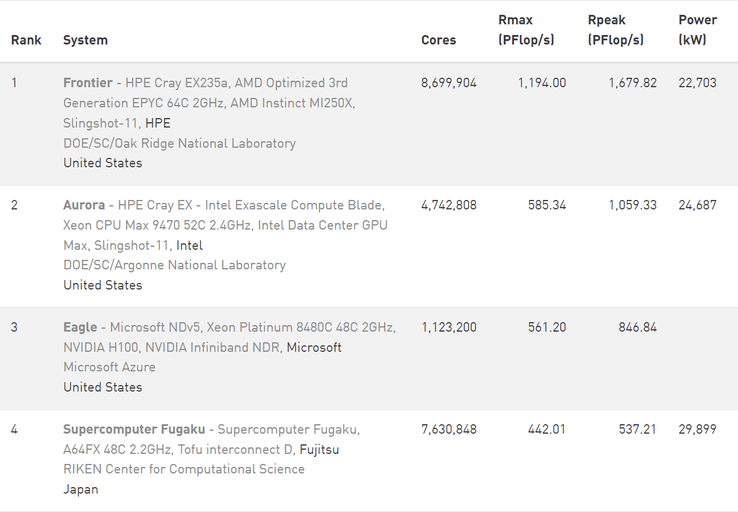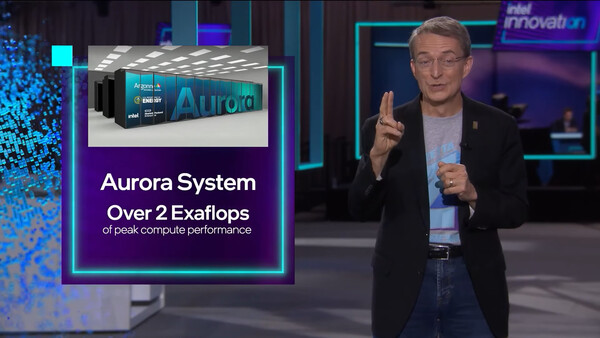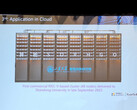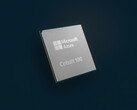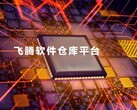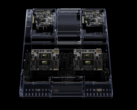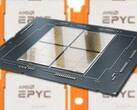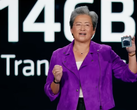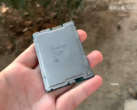CheckMag | Intel's defeat by AMD at Supercomputing 2023 was bigger than half a million Ryzen 9s – literally
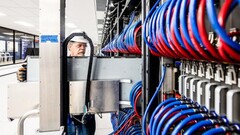
At November's Supercomputing 2023 conference, the updated Top500 list of the world's most powerful supercomputers revealed that Intel's Aurora system – originally planned to arrive by 2018 – failed to topple AMD's Frontier machine. Aurora, installed at the Argonne National Laboratory, achieved a score of 585.34 PetaFLOPS in the high-performance LINPACK (HPL) benchmark, while Frontier, resident at Tennessee's Oak Ridge National Laboratory, maintained its lead with an HPL score of 1,194 PFLOPS. Either of those numbers absolutely dwarfs the <1 TeraFLOP result achieved by the Ryzen 9 7950X in HPL testing from Puget Systems (though the latter is a lot more affordable to buy on Amazon!).
Now, of course, there are a lot of asterisks to be added here. Aurora was only installed in late June and has been subject to tuning and stability testing since then; the somewhat underwhelming result submitted to the Top500 was with only half of the machine operational. Much of the delayed period was due to slips by partners rather than Intel themselves. The delays weren't just static timeline shifts for the same hardware, and more advanced generations of Intel's chips have been implemented in the final product than originally envisioned. The list goes on.
But here's the thing: it's a list that a lot of people watching this all play out probably don't care about.
Execution is key for commercial customers. If a service level agreement requires five nines uptime, that 99.999% doesn't have room for many asterisks. And from that perspective, Intel – at the very highest level, contracted by a government customer (the US Department of Energy, no less) – has landed in the #2 spot, beaten by a system delivered a year and a half earlier, and so delayed that it should've been in service before that rival was even announced.
A result like can have significant implications for the business market, even if these systems seem like an ivory tower set apart from racks in the real world. Just as performance at the high-end of consumer graphics have granted Nvidia unassailable mindshare amongst hardware enthusiasts, AMD's Frontier sitting at the top, and defending their position for eighteen months now, could see halo effects trickle down the product stack to their EPYC processors and Radeon Instinct accelerators. The inverse might happen, too, with Intel's Xeon CPUs and Xe accelerators being tarred by this defeat (and Aurora's wider woes) regardless of their merits.
Then there's the question of power usage. Though Aurora is delivering only around a quarter of the two-ExaFLOP (as in, in the region of 2,000 PetaFLOPs) previously claimed as a goal by Intel, it's drawing almost half the power. That puts it at 24.7 MW, which is actually nearly 2 MW higher than Frontier draws, and once you adjust for the latter pumping out 1.194 ExaFLOPs the efficiency situation for the blue team is particularly dire.
There could be a few explanations for this, but none of them make Intel look good. Perhaps the much-hyped Sapphire Rapids server CPUs and Ponte Vecchio GPUs are just horribly inefficient to start with; perhaps the stated power draw included the full supercomputer's infrastructure and cooling rather than just the half that was submitted to the Top500 list, or the other half of the system is also active and displaying a rather disconcertingly high idle power draw. Either way, the headline numbers pitch Intel's solution offering less than half the efficiency of the competition – and even if the giant supercomputers themselves aren't applicable to prospective business customers, the electricity bill certainly is.
There's just one more question, though: who says that they aren't applicable to the enterprise world?
Sure, the gold and silver medals have been built on (and for) bespoke high-performance computing platforms, but Microsoft's Eagle system also made it onto the podium. Eagle's 561.2 PetaFLOPs of number-crunching have been built from more standardised HGX H100 units from Nvidia, and it's set to be available to use for AI models and virtual machines through the Azure Cloud Platform; a commercial system made from commercial hardware, sitting above all but two of the world's bespoke HPC systems.
At the end of the day, the world of consumer computing is dwarfed by the sheer scale of the server and datacentre markets. The duels for performance and efficiency at their very peak will have knock-on effects of their own – and ones far more impactful to a chipmaker's bottom line than any number of "Best Gaming CPU" lists.




